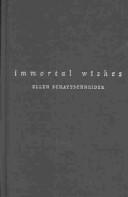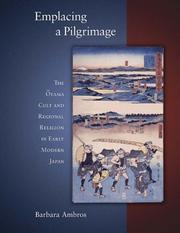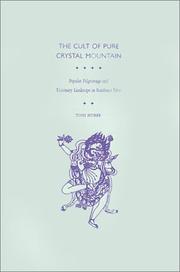| Listing 1 - 5 of 5 |
Sort by
|
Book
ISBN: 4757141335 Year: 2006 Publisher: 東京 NTT出版
Abstract | Keywords | Export | Availability | Bookmark
 Loading...
Loading...Choose an application
- Reference Manager
- EndNote
- RefWorks (Direct export to RefWorks)

ISBN: 9780822330752 9780822330622 0822330628 082233075X Year: 2003 Publisher: Durham: Duke university press,
Abstract | Keywords | Export | Availability | Bookmark
 Loading...
Loading...Choose an application
- Reference Manager
- EndNote
- RefWorks (Direct export to RefWorks)
Mountain worship --- Mountain worship --- Kawai, Mariko. --- Iwaki-machi (Japan) --- Tsugaru Region (Japan)
Book
ISBN: 9780824890469 9780824887889 0824887883 0824890469 Year: 2022 Publisher: Honolulu University of Hawaiʻi Press
Abstract | Keywords | Export | Availability | Bookmark
 Loading...
Loading...Choose an application
- Reference Manager
- EndNote
- RefWorks (Direct export to RefWorks)
"Even a fleeting glimpse of Mount Fuji's snow-capped peak emerging from the clouds in the distance evokes the reverence it has commanded in Japan from ancient times. Long considered sacred, during the medieval era the mountain evolved from a venue for solitary ascetics into a well-regulated pilgrimage site. With the onset of the Tokugawa period, the nature of devotion to Mount Fuji underwent a dramatic change. Working people from nearby Edo (now Tokyo) began climbing the mountain in increasing numbers and worshipping its deity on their own terms, leading to a widespread network of devotional associations known as Fujikō. In Faith in Mount Fuji Janine Sawada asserts that the rise of the Fuji movement epitomizes a broad transformation in popular religion that took place in early modern Japan. Drawing on existing practices and values, artisans and merchants generated new forms of religious life outside the confines of the sectarian establishment. Sawada highlights the importance of independent thinking in these grassroots phenomena, making a compelling case that the new Fuji devotees carved out enclaves for subtle opposition to the status quo within the restrictive parameters of the Tokugawa order. The founding members effectively reinterpreted materials such as pilgrimage maps, talismans, and prayer formulae, laying the groundwork for the articulation of a set of remarkable teachings by Jikigyō Miroku (1671-1733), an oil peddler who became one of the group's leading ascetic practitioners. His writings fostered a vision of Mount Fuji as a compassionate parental deity who mandated a new world of economic justice and fairness in social and gender relations. The book concludes with a thought-provoking assessment of Jikigyō's suicide on the mountain as an act of commitment to world salvation that drew on established ascetic practice even as it conveyed political dissent. Faith in Mount Fuji is a pioneering work that contains a wealth of in-depth analysis and original interpretation. It will open up new avenues of discussion among students of Japanese religions and intellectual history, and supply rich food for thought to readers interested in global perspectives on issues of religion and society, ritual culture, new religions, and asceticism"--
Mountain worship --- Fuji, Mount (Japan) --- Religious life and customs.

ISBN: 9780674027756 0674027752 1684174694 9781684174690 Year: 2008 Publisher: Cambridge Harvard university Asia center
Abstract | Keywords | Export | Availability | Bookmark
 Loading...
Loading...Choose an application
- Reference Manager
- EndNote
- RefWorks (Direct export to RefWorks)
Towering over the Kanto Plain, the sacred mountain Oyama (literally, "Big Mountain") has loomed large over the religious landscape of early modern Japan." "By the Edo period (1600-1868), the revered peak had undergone a transformation from secluded spiritual retreat to popular pilgrimage destination. Its status as a regional landmark among its devotees was boosted by its proximity to the shogunal capital and the wide appeal of its amalgamation of Buddhism, Shinto, mountain asceticism, and folk beliefs. The influence of the Oyama cult - the intersecting beliefs, practices, and infrastructure associated with the sacred site - was not lost on the ruling Tokugawa shogunate, which saw in the pilgrimage an opportunity to reinforce the communal ideals and social structures that the authorities espoused. Barbara Ambros provides a detailed narrative history of the mountain and its place in contemporary society and popular religion by focusing on the development of the Oyama cult and its religious, political, and socioeconomic contexts. Richly illustrated and carefully researched, this study emphasizes the importance of "site" or "region" in considering the multifaceted nature and complex history of religious practice in Tokugawa Japan.
Mountain worship --- J1917.80 --- J1918.13 --- J1940 --- Mountains --- Nature worship --- Japan: Religion -- Shintō -- relations -- society, sociology --- Japan: Religion -- Shintō -- shrines and pilgrimage -- Kantō region -- Kanagawa prefecture (Sagami) --- Japan: Religion -- Shugendō --- Religious aspects --- Ōyama (Kanagawa-ken, Japan) --- Ō Mountain (Kanagawa-ken, Japan) --- Ō-yama (Kanagawa-ken, Japan) --- Religious life and customs. --- 11.87 religions of Japan. --- Mountain worship. --- Wallfahrt. --- Kult. --- Bedevaartplaatsen. --- Cultus. --- Japansk religion --- Geschichte 1500-1900. --- Ōyama (Kanagawa-ken, Japan) --- Japan --- Ōyama

ISBN: 1280471395 0195353137 0585294917 9780585294919 9786610471393 6610471398 0195120078 9780195120073 0197738753 Year: 1999 Publisher: New York : Oxford University Press,
Abstract | Keywords | Export | Availability | Bookmark
 Loading...
Loading...Choose an application
- Reference Manager
- EndNote
- RefWorks (Direct export to RefWorks)
The Tibetan district of Tsari with its sacred snow-covered peak of Pure Crystal Mountain has long been a place of symbolic and ritual significance for Tibetan peoples. In this book, Toni Huber provides the first thorough study of a major Tibetan Buddhist pilgrimage center and cult mountain, and explores the esoteric and popular traditions of ritual there. The main focus is on the period of the 1940's and '50's, just prior to the 1959 Lhasa uprising and subsequent Tibetan diaspora into South Asia. Huber's work thus documents Tibetan life patterns and cultural traditions which have largely disappeared
Buddhism --- Mountain worship --- Mountains --- Nature worship --- Buddha and Buddhism --- Lamaism --- Ris-med (Lamaism) --- Religions --- Customs and practices. --- Religious aspects --- Tibet Autonomous Region (China) --- Tibetan Autonomous Region (China) --- Hsi-tsang tzu chih chʻü (China) --- Xizang Zizhiqu (China) --- 西藏自治区 (China) --- Hsi-tsang tzu chih chʻü jen min cheng fu (China) --- Xizang Zizhiqu ren min zheng fu (China) --- TAR (China) --- Xizang Autonomous Region (China) --- Bod Raṅ-skyoṅ-ljoṅs (China) --- Bod (China) --- Sitsang (China) --- Tibet (China) --- Thibet (China) --- Tibet-Chamdo (China) --- Tübüt (China) --- Xizang (China) --- Tibet --- Religious life and customs. --- Тибет (China) --- Tu̇vd (China) --- Tȯvȯd (China) --- 西藏 (China)
| Listing 1 - 5 of 5 |
Sort by
|

 Search
Search Feedback
Feedback About UniCat
About UniCat  Help
Help News
News